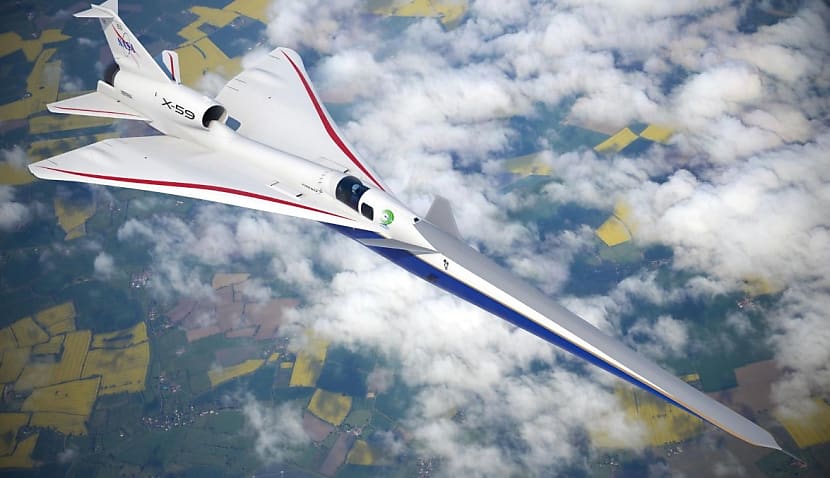The technological advancements created by the X-59 are hugely significant, given that non-military aircraft are banned from flying faster than the speed of sound over land – a rule that contributed to the early retirement of the Concorde.
The X-59’s reveal will take place at a ceremony hosted by prime contractor Lockheed Martin Skunk Works at its Palmdale, California, base and be attended by NASA’s deputy administrator, Pam Melroy. It will mark the first time the aircraft has been seen in its final red, white and blue livery.
The ceremony and rollout of the aircraft will stream live on the NASA+ streaming service. Coverage will also air on NASA Television, the NASA app, YouTube, and the agency’s website.
The aircraft is unique because it has no cockpit or front-facing window. It differs from conventional planes due to its dart-like shape that stops the various shockwaves formed on the surface from joining together – thereby eliminating the sonic boom.
NASA awarded Lockheed Martin’s Skunk Works a US$247.5 million contract to design, build and fly a 30-metre demonstrator prototype – X-59 QueSST – but its progress has been slower than hoped.
Space Connect last reported on its development back in 2011, when NASA released a time-lapse video showing the X-59’s wing, tail and fuselage being merged together. In the years since very little information on it has been released, though NASA did release a further video last year charting its progress.
Peter Coen, NASA’s QueSST Mission Integration Manager, said in April 2023, “We’re definitely ready to write a new chapter in the history of supersonic flight, making air travel over land twice as fast, but in a way that is safe, sustainable, and so much quieter than before.”
It comes after Space Connect reported in November how local company Hypersonix would gather data on its upcoming hypersonic “spaceplane” by creating a virtual replica.
The deal will see the ACT-based Nominal Systems make a “digital twin” of the 3.5-metre-long demonstrator vehicle alongside replicating conditions outside of the aircraft. It comes with the DART AE set for its first real-world test flight next year.
While hypersonic tech – defined as flying at least five times the speed of sound – is nothing new, countries are currently in an arms race to develop the next generation of missiles that are so manoeuvrable in mid-air, they can’t be intercepted or detected.
Hypersonic technology is also believed to be able to one day create aircraft that can travel into space, creating an alternative to traditional vertical rocket blast-offs.
Hypersonix co-founder Michael Smart, who invented the “Spartan” engine that will power its vehicles, previously told Space Connect’s sister brand, Australian Aviation, his long-term aim is to fly customers to space “like you fly with Qantas”.

Adam Thorn
Adam is a journalist who has worked for more than 40 prestigious media brands in the UK and Australia. Since 2005, his varied career has included stints as a reporter, copy editor, feature writer and editor for publications as diverse as Fleet Street newspaper The Sunday Times, fashion bible Jones, media and marketing website Mumbrella as well as lifestyle magazines such as GQ, Woman’s Weekly, Men’s Health and Loaded. He joined Momentum Media in early 2020 and currently writes for Australian Aviation and World of Aviation.

